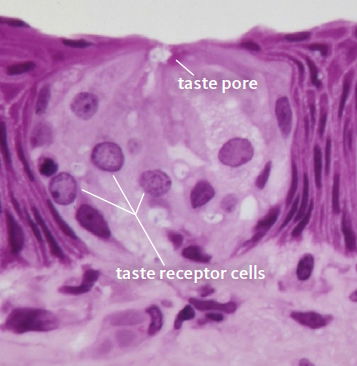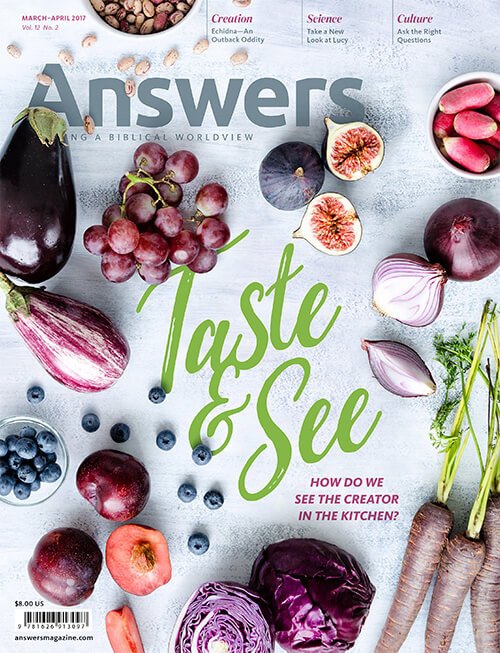The Tongue: A Gift for Taste & Enjoyment
How God made our tongues with taste buds, taste pores, and taste receptor cells to interact with our brains to allow us to enjoy what we eat
Look at those luscious pancakes! Can’t you just taste them? You can—because of God’s intricate design for your senses.
Just the sight and sound of pancakes sizzling on the griddle makes us hungry. But the smell of the frying batter, butter, and syrup really gets our mouth watering, and the sumptuous texture, warmth, and sweet taste are pure delight. Without our senses of taste and smell, eating would be drudgery—something we would force ourselves to do just to stay alive but not really enjoy. Let us be thankful that God has given us good taste!
Our sense of taste is very closely related to our sense of smell, and the two must work together for us to enjoy our food fully. For example, have you noticed that when a cold stops up your nasal passages, your taste is also dulled? Try eating strawberries or a fruit-flavored jelly bean while plugging your nose—even though you can taste some sweetness, it’s just not the same. While we’re eating, we tend to breathe out through our noses, greatly increasing our sense of flavor through the smell of the food that is on our tongues.
The organ primarily responsible for our sense of taste is the taste bud. Taste buds are microscopic structures near the surface of our tongue. We have about 8,000 taste buds, which wear out and are replaced about every two weeks throughout life. As we age, some taste buds are not replaced, and our taste becomes less sensitive. This is why many people prefer more salt and pepper on their food as they get older.

Taste bud with taste receptor cells and taste pore.
Taste buds are mostly located in tiny mushroom-shaped bumps called fungiform papillae (puh-PILL-ee) scattered on the surface of our tongue. If you look closely in a mirror, you can see these papillae as smooth little bumps on the top and sides of your tongue. Other taste buds are located in foliate papillae in the walls of small folds on each side of your tongue.
Tasting morsels of food is more complicated than simply letting them touch the outside of your taste buds. The food must pass through a small hole (the taste pore) to reach a spherical cluster of about 100 taste receptor cells inside the taste bud. For our taste buds to work, saliva (produced by our salivary glands) must at least partially dissolve the food. Inside the taste bud, the dissolved food comes into contact with tiny hair-like structures on the taste receptor cells. These cells respond to four basic flavors: salty, sweet, sour, and bitter.
The taste receptor cells send these basic flavor signals to the brain by way of special cranial nerves. In the brain they are combined with odor signals coming from the nose. Together they produce all the subtle flavors we are able to perceive.
To work, this whole interconnected system must have been complete from the very beginning.
It is fitting then that we should
thank God for our wonderful sense
of taste and join King David in declaring,
“Oh, taste and see that the Lord is
good; blessed is the man who trusts in
Him!
” (Psalm 34:8).
See for Yourself . . .
Experience the Importance of Saliva in Taste
- First dry out your mouth by placing a couple of paper napkins in your mouth (don’t swallow them!).
- Remove the napkins and repeat if necessary.
- Place a small spoonful of sugar on top of your tongue and close your mouth.
- Move the sugar around against the roof of your mouth. At first it will taste and feel like fine sand.
- Soon your salivary glands (particularly the parotid glands) will respond to the dry mouth and sugar by producing a watery saliva.
- You should soon taste the sweetness of the sugar as the saliva dissolves it, allowing the sugar solution to enter the taste pores of your taste buds.
Experience the Importance of Smell in Taste
- Plug your nose.
- Place a drop of vanilla extract on your tongue. This should be essentially tasteless because our taste buds are not sensitive to the vanilla flavor.
- Now open your nose and breathe normally. Now you “taste” the vanilla—but you are really smelling it. Indeed, you are mostly smelling vanilla by breathing out—a sort of backwards smelling.
Answers Magazine
March–April 2017
How do we see our Creator in the kitchen? The infinite diversity of delicious food shows His lavish love.
Browse IssueRecommended Resources

Answers in Genesis is an apologetics ministry, dedicated to helping Christians defend their faith and proclaim the good news of Jesus Christ.
- Customer Service 800.778.3390
- Available Monday–Friday | 9 AM–5 PM ET
- © 2025 Answers in Genesis




